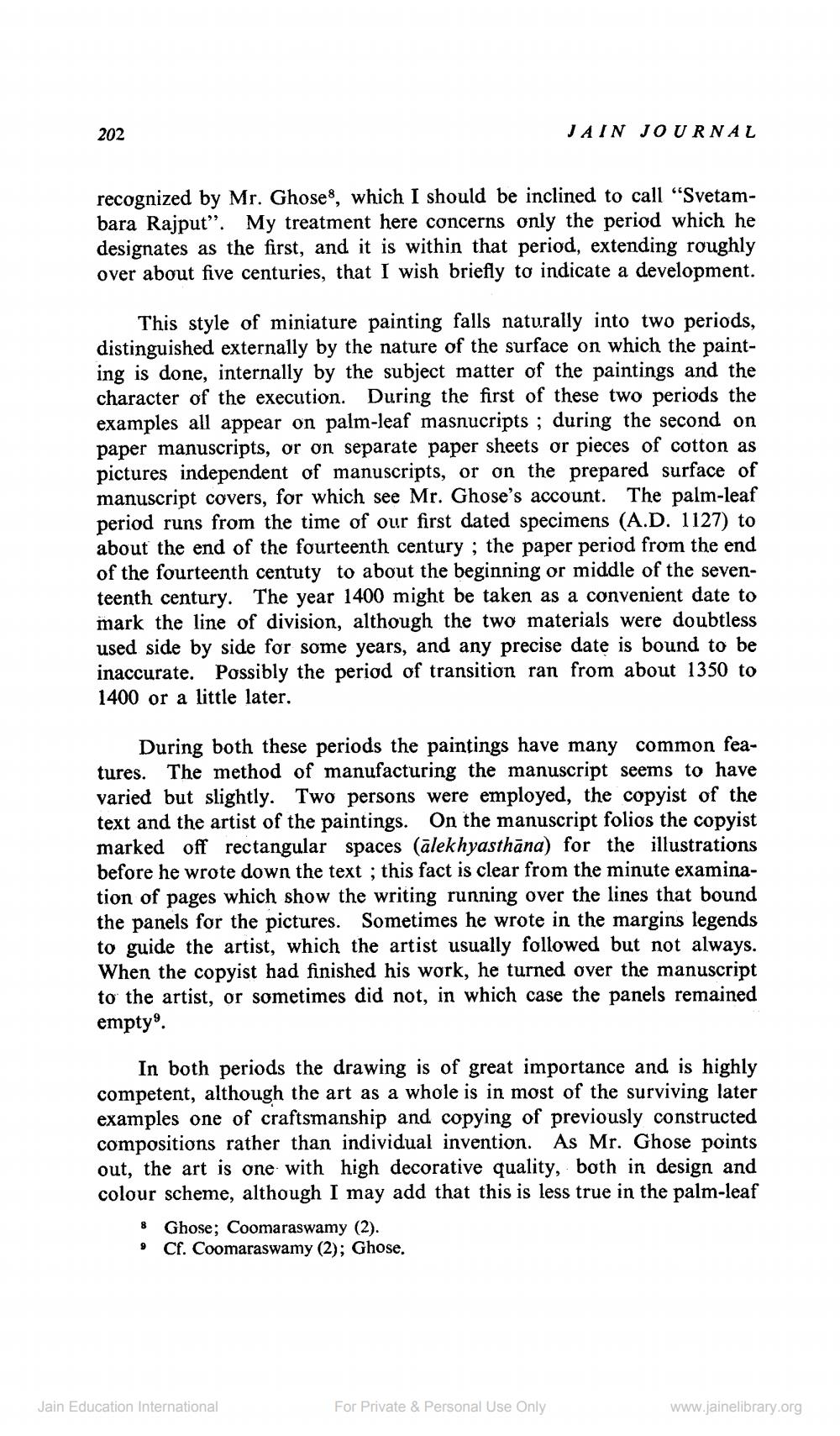Book Title: Jain Journal 1970 04 Author(s): Jain Bhawan Publication Publisher: Jain Bhawan Publication View full book textPage 8
________________ 202 recognized by Mr. Ghose, which I should be inclined to call "Svetambara Rajput". My treatment here concerns only the period which he designates as the first, and it is within that period, extending roughly over about five centuries, that I wish briefly to indicate a development. This style of miniature painting falls naturally into two periods, distinguished externally by the nature of the surface on which the painting is done, internally by the subject matter of the paintings and the character of the execution. During the first of these two periods the examples all appear on palm-leaf masnucripts; during the second on paper manuscripts, or on separate paper sheets or pieces of cotton as pictures independent of manuscripts, or on the prepared surface of manuscript covers, for which see Mr. Ghose's account. The palm-leaf period runs from the time of our first dated specimens (A.D. 1127) to about the end of the fourteenth century; the paper period from the end of the fourteenth centuty to about the beginning or middle of the seventeenth century. The year 1400 might be taken as a convenient date to mark the line of division, although the two materials were doubtless used side by side for some years, and any precise date is bound to be inaccurate. Possibly the period of transition ran from about 1350 to 1400 or a little later. JAIN JOURNAL During both these periods the paintings have many common features. The method of manufacturing the manuscript seems to have varied but slightly. Two persons were employed, the copyist of the text and the artist of the paintings. On the manuscript folios the copyist marked off rectangular spaces (alekhyasthana) for the illustrations before he wrote down the text; this fact is clear from the minute examination of pages which show the writing running over the lines that bound the panels for the pictures. Sometimes he wrote in the margins legends to guide the artist, which the artist usually followed but not always. When the copyist had finished his work, he turned over the manuscript to the artist, or sometimes did not, in which case the panels remained empty9. In both periods the drawing is of great importance and is highly competent, although the art as a whole is in most of the surviving later examples one of craftsmanship and copying of previously constructed compositions rather than individual invention. As Mr. Ghose points out, the art is one with high decorative quality, both in design and colour scheme, although I may add that this is less true in the palm-leaf 8 Ghose; Coomaraswamy (2). 9 Cf. Coomaraswamy (2); Ghose, Jain Education International For Private & Personal Use Only www.jainelibrary.orgPage Navigation
1 ... 6 7 8 9 10 11 12 13 14 15 16 17 18 19 20 21 22 23 24 25 26 27 28 29 30 31 32 33 34 35 36 37 38 39 40 41 42 43 44 45 46 47 48 49 50 51 52 53 54 55
